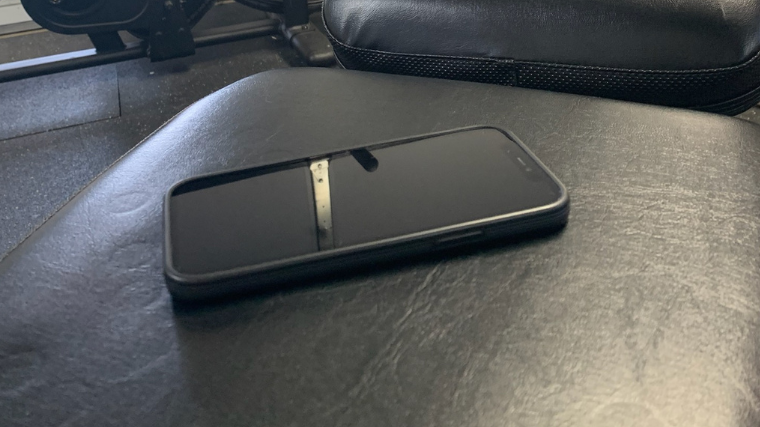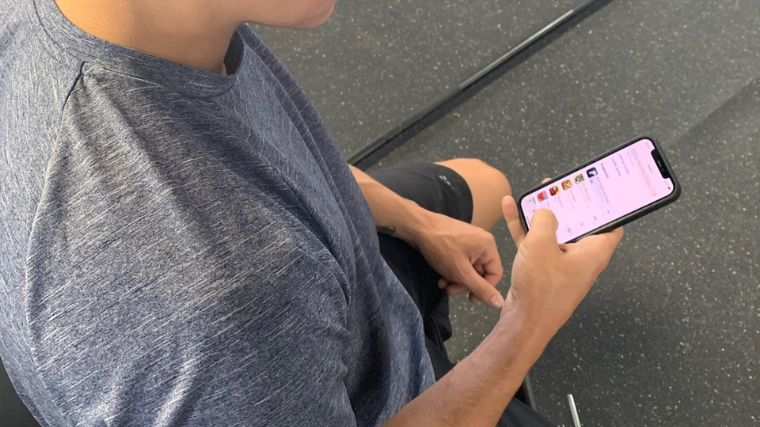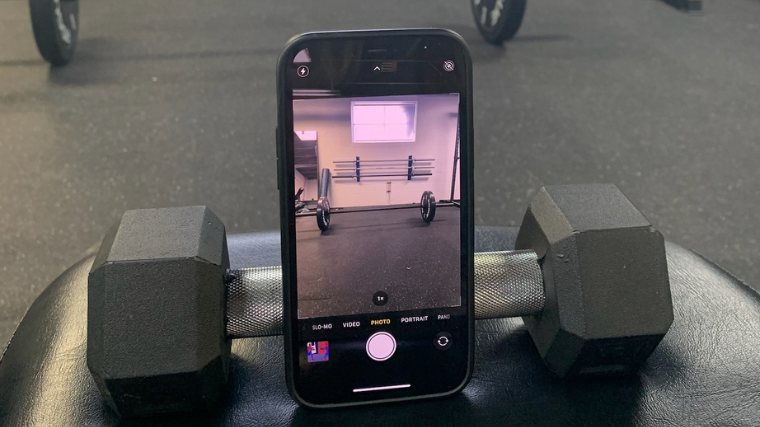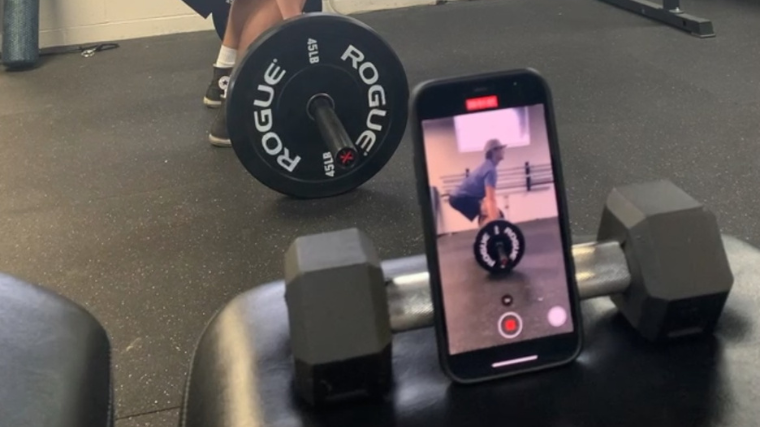How do you measure your own performance in the gym? Quantifying your strength is easy enough; just count up the plates you have loaded on your barbell. On the other hand, analyzing and understanding the quality of your lifting is something else.
Looking at your bar path is one of the few ways to understand, unpack, and improve your technique in the weight room without the assistance of a coach, particularly if you’re a powerlifter, weightlifter, or general strength athlete.
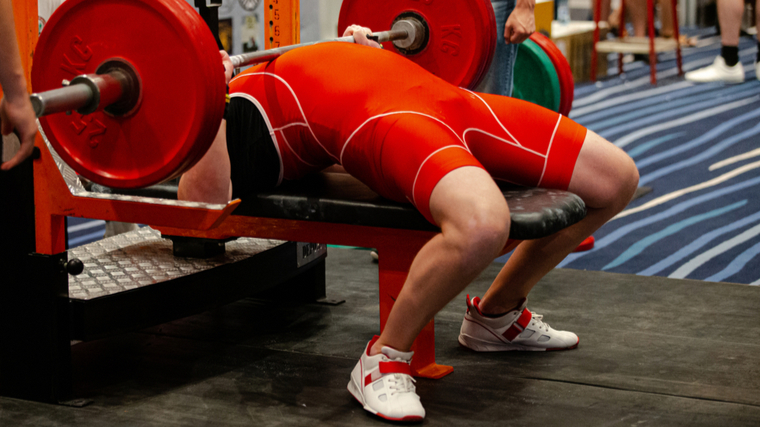
Here’s everything you need to know about bar path, and how to utilize it properly to become a better lifter.
- What Is Bar Path?
- Bar Path in Powerlifting
- Bar Path in Weightlifting
- Bar Path in Bodybuilding
- How to Analyze Bar Path
What Is Bar Path?
Put simply, bar path is the trajectory of a barbell as it moves through space. It’s the route your barbell takes to get from point “A” to point “B” — from the floor to lockout in the deadlift, from straightened arms to your chest (and back again) in the bench press, and so on.
As an athlete, from time to time you should assess your bar path for the valuable information it provides about your technique. Your bar path can help show you where your form might be going awry, what muscles you’re working the most, and a whole lot more.
Generally speaking, analyzing bar path is of greater importance to strength athletes than bodybuilders.
Powerlifters and weightlifters in particular look to their bar path for tactile feedback and to improve the efficiency of their max-effort attempts.
This isn’t to say that bar path is a useless metric for bodybuilders, though. Physique enthusiasts can utilize bar path to help align their structure with the weights, improving mind-muscle connection in the process.
Bar Path in Powerlifting
A powerlifter’s prime directive is about getting their barbell (loaded as heavy as possible) from one point to another in the most efficient manner possible.
Whether you’re squatting, pressing, or pulling, the more tight and smooth your bar path is, the more weight you can lift — and the better you’ll rank at your next meet.
Back Squat Bar Path
When analyzing your squat technique as a powerlifter, your depth — how far below your kneecap your hip crease sinks as you descend — reigns supreme.
That said, your bar path in the squat can help you understand your mechanics in a way that benefits you when you max out.
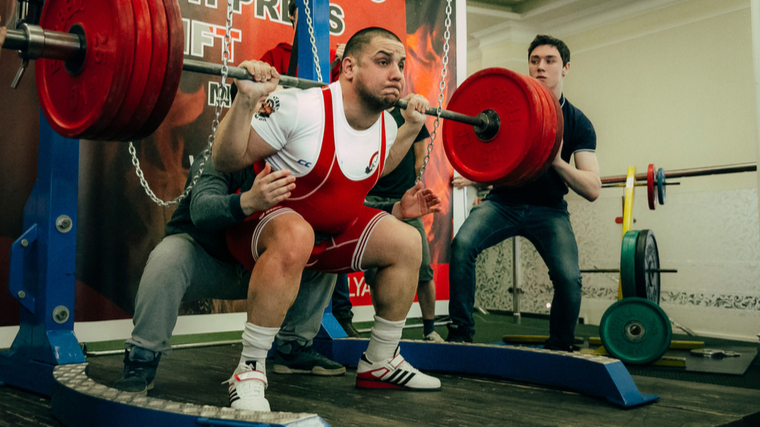
Put simply, a vertical bar path in the squat indicates that you can properly balance the load across your lower body. However, your bar may travel forward as you sit into the squat from time to time, especially if you’re working with a weight that’s lighter than you are. (1)
A non-vertical bar path in the squat might also expose a collapsing trunk, which might inspire you to train your core more seriously. Or, if your bar path is shaky or meandering, you might lack the eccentric control necessary to max out safely.
Bench Press Bar Path
Even though the bench press is a vertical pressing movement, your bar path shouldn’t be. Proper bench technique for powerlifting is about maximizing your leverage to heave extraordinarily heavy weights.
A perfectly-vertical bar path in the bench press may mean you’re leaving gains on the table. Not only does it place added stress on the shoulder joint, but you’re also probably not lowering the bar to the highest point on your chest either, increasing your range of motion.
Research conducted on world-class bench pressers (2) compared against novice gymgoers backs this idea. While both the neophyte and the pro powerlifter lower their barbells in an arc, the elite benchers push their bars back over the shoulder as fast as possible.
If you’re pressing from the sternum (or shoulder) in a straight line, a lack of vertical alignment between your shoulder, elbow, and wrist will compromise your ability to effectively generate force.
Deadlift Bar Path
The deadlift is a pure expression of physics at work. Your task is to stand up with a loaded barbell. The most efficient way to do so is to move it in a straight line, period.
As such, you should ensure that your deadlift bar path is as vertical as it can be. If it somehow looks more like a row, with unwanted forward or backward movement, something is undoubtedly wrong with your technique.
However, small deviations in bar path may also provide valuable information. If your bar path angles forward slightly, for example, your shoulders might be too far in front of the barbell during your setup.
But generally speaking, deadlift bar path should be almost perfectly straight in nearly all cases.
Bar Path in Weightlifting
Olympic lifters share the goal of efficiently moving their barbells, but the snatch and clean & jerk are far more dynamic and aggressive than the competition movements of powerlifting.
As such, there’s a lot that can go wrong and throw your bar path into disarray. Weightlifters prioritize a lean, vertical bar path above almost all other factors that affect their success on the platform.
Snatch Bar Path
The snatch is one of, if not the, most acrobatic and dynamic movements you can perform in the weight room. In one swift motion, you must send your bar flying off the floor and over your head.
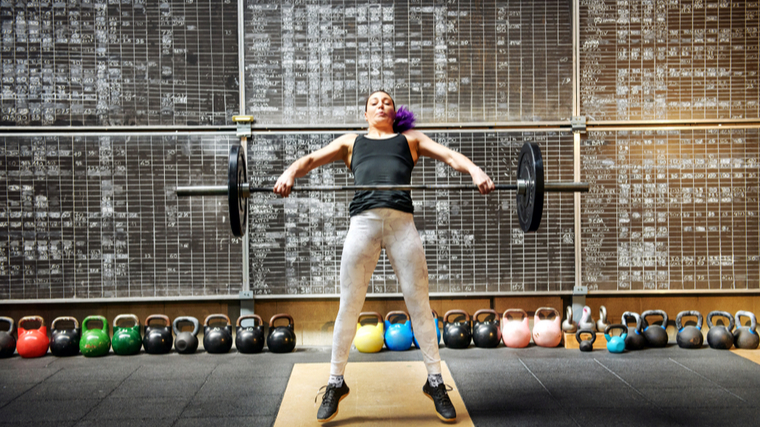
If you miss by an inch, you miss by a mile. Even a small deviation in vertical travel can mean a missed lift. As such, maintaining a tight, near-vertical bar path is absolutely crucial to your performance of the snatch.
Since the snatch makes contact with your body at the hip, you’re liable to send it flying outward at the moment you extend.
A loopy bar path in the snatch might mean you rely too much on your glutes instead of your quads, are leaning back early as you pull, or a number of other factors.
Clean & Jerk Bar Path
Verticality is almost as important in the clean & jerk as it is in the snatch. Since it’s a bit easier to receive a barbell on your shoulders in the rack position of the clean than overhead in a deep squat, there’s a bit more leeway to your bar path when you perform the heavier of the two Olympic lifts.
However, a vertical bar path is paramount in the jerk, no matter your preferred style. If your bar path drifts too far forward (or backward), you’ll struggle to split your legs underneath and catch it in a stable posture. Lateral bar movement can also inform you about how you’re applying force.
A forward-moving bar in the jerk may indicate that your weight is too far onto your toes and not spread evenly across your whole foot, or that you’re trying to push with your arms too soon.
Bar Path in Bodybuilding
Bodybuilders aren’t judged one bit on their lifting technique or strength. When you don posing trunks or a bikini and step out under the lights, you don’t bring a card with you that lists out all your personal records.
However, that doesn’t mean that bar path has no relevance whatsoever for a physique athlete. If you train for muscle growth, you probably perform the bench press, squat, or deadlift in some capacity, or work with their variations.
Many of the same principles regarding bar path that powerlifters utilize are relevant there as well.
If you train for bodybuilding full-time, it might be worth periodically checking out your bar path on major barbell-oriented lifts. It could help you decide if you need to adjust your form for a better contraction, or let you know if you’re unconsciously cutting your range of motion short.
How to Analyze Bar Path
Unfortunately, having your gym partner or coach stand to the side and eyeball your lifting won’t really cut it. If you want to properly and effectively understand your bar path, it’s going to take a bit of setup.
Step 1 — Get a Smartphone
The only bare essential you’ll need to study your bar path is a smartphone (or, technically, a video camera). You’ll need to not only film your lifting in real time, but also review it with the assistance of software designed specifically to track bar path.
Step 2 — Download a Tracking App
Fortunately, you don’t need to eyeball your bar path. There are several apps developed specifically to draw a clear and visible line illustrating how your bar moves.
Programs like WL Analysis or Iron Path are among the more popular options, but most of them provide the same functionality, so it’s really up to personal preference.
Step 3 — Set Yourself Up
To get an accurate picture of your bar’s path, your camera should be firmly propped up against a stable object. You can rest it against a full water bottle, a small dumbbell, or have a steady-handed friend hold your phone for you.
Note though that your camera must be set up exactly perpendicular to your barbell. You should be far enough away that your entire body is in the frame, the camera at about waist-height, and the cap of the bar is pointing directly at the lens.
Step 4 — Film It!
Once your camera is on and recording, approach the bar for your lift. Your best bet is to film your bar path with a moderate load that accurately represents your technique — think between 70 and 85 percent of your max.
If you film a lift that’s too light, the bar may not move accurately as it would during periods of high effort. Similarly, filming a 1-rep max is liable to present technique errors that don’t paint a clear picture either.
The Pathway to Progress
Remember — bar path is a form of information, and information is useless on its own. Don’t get too obsessed with analyzing the lines of your lifting day in and day out to the point of forgetting what really matters in the gym.
Training hard, keeping tabs on your nutrition, and prioritizing recovery are what drive progress long term. The shortest distance between two points is a straight line, after all. Your perspective, and your bar path, should be laser-focused.
Beyond that, bar path is a fantastic way to develop a deeper understanding of your technique, mobility, and movement. Use it wisely and the gains will speak for themselves.
References
- Nuckols, G. “How to Squat: The Definitive Guide” www.strongerbyscience.com
- McLaughlin, T. “Bench Press More Now: Breakthroughs in Biomechanics & Training Methods.”
Featured Image: @sportpoint / Shutterstock
